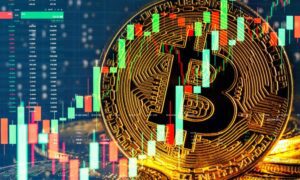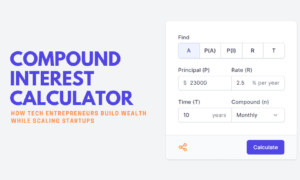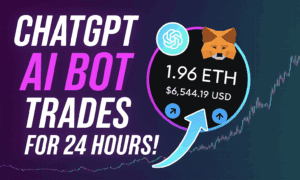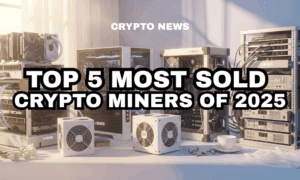The cryptocurrency landscape is ever-evolving and dynamic, led by Bitcoin as the pioneering digital currency. For investors and enthusiasts, staying informed and making educated decisions in this environment is essential. Beyond Bitcoin, there’s a rich array of alternative cryptocurrencies, or “altcoins,” each with its own unique features and practical applications. This article delves into the altcoin ecosystem, exploring the origins, development, key figures, investment opportunities, and technological innovations of altcoins. Additionally, we’ll discuss the regulatory challenges they face and their significant impact on the financial and technological worlds. As it is in the name, immediate-smarter.com is built to make traders/investors smarter by connecting them with investment education firms. Register now and learn more!
Understanding Altcoins
Definition and Characteristics of Altcoins
Altcoins, short for alternative coins, refer to any cryptocurrency other than Bitcoin. While they share some fundamental characteristics with Bitcoin, such as decentralized ledger technology and digital scarcity, altcoins often bring distinct features and innovations to the table. These can include enhanced privacy, smart contract functionality, faster transaction speeds, and more.
Differentiating Factors from Bitcoin
One key distinction between altcoins and Bitcoin lies in their unique value propositions. Altcoins aim to address specific limitations or challenges faced by Bitcoin, such as scalability, energy consumption, or transaction speed. Understanding these differences is crucial to grasping the diversity within the cryptocurrency ecosystem.
Categories of Altcoins
Altcoins can be categorized into various groups, including tokens, forks, and completely new blockchain projects. Tokens are built on existing blockchain platforms, like Ethereum, and serve various purposes, from representing digital assets to powering decentralized applications (DApps). Forks are modifications of existing blockchain code, resulting in a separate chain with distinct features.
The Altcoin Explosion
Historical Overview of Key Altcoins
The proliferation of altcoins began soon after the launch of Bitcoin in 2009. One of the earliest and most significant altcoins was Litecoin, introduced in 2011, which aimed to offer faster and cheaper transactions. Since then, countless altcoins have been created, each with its own vision and objectives.
Factors Contributing to the Proliferation of Altcoins
Several factors have fueled the growth of the altcoin ecosystem. These include the desire to address Bitcoin’s limitations, experimentation with new consensus mechanisms, and the rise of Initial Coin Offerings (ICOs) as a fundraising method. Additionally, the open-source nature of blockchain technology has encouraged developers worldwide to create their cryptocurrencies.
- Bitcoin’s Evolution: What to Expect from the Market in 2024
- The Rise of Altcoins: Competition in the Bitcoin Market in 2024
Altcoins as Innovative Solutions
Many altcoins are not merely imitations of Bitcoin; they represent innovative solutions to real-world problems. For example, Ethereum introduced smart contracts, enabling programmable and self-executing agreements. Ripple (XRP) sought to revolutionize cross-border payments and banking, while Cardano focused on sustainability and scalability.
Notable Altcoins in the Ecosystem
Let’s take a closer look at some of the most notable altcoins in the cryptocurrency ecosystem:
Ethereum: Smart Contracts and Decentralized Applications
Ethereum, often regarded as the second most valuable cryptocurrency by market capitalization, introduced the concept of smart contracts. These self-executing contracts enable a wide range of decentralized applications (DApps) to be built on the Ethereum blockchain.
Ripple (XRP): Cross-Border Payments and Banking
Ripple aims to facilitate cross-border payments and improve the efficiency of the global banking system. Its native token, XRP, is used for quick and cost-effective international transactions.
Litecoin: Faster and Cheaper Transactions
Litecoin, often referred to as the “silver” to Bitcoin’s “gold,” was created to offer faster transaction confirmation times and lower fees. It has gained popularity as a medium of exchange.
Cardano: Sustainability and Scalability
Cardano places a strong emphasis on sustainability and scalability, with a research-driven approach to blockchain development. Its goal is to provide a secure and sustainable platform for the execution of smart contracts and DApps.
Polkadot: Interoperability and Parachains
Polkadot’s unique approach to blockchain technology focuses on interoperability. It enables multiple blockchains, known as parachains, to connect and share information securely.
Solana: High-Speed Blockchain and DeFi
Solana has gained attention for its high-speed blockchain, capable of processing thousands of transactions per second. It has become a prominent platform for decentralized finance (DeFi) applications.
Altcoins and Investment Opportunities
Investment Strategies in the Altcoin Market
Investing in altcoins can be both exciting and lucrative, but it’s essential to approach it with a clear strategy. Diversification, research, and risk management are crucial elements of success in the volatile altcoin market.
Risks and Challenges Associated with Altcoin Investments
Altcoin investments come with their fair share of risks, including price volatility, regulatory uncertainties, and the potential for project failures. Investors need to stay informed and exercise caution.
Success Stories and Cautionary Tales
The cryptocurrency space has witnessed remarkable success stories, with early investors reaping substantial rewards. However, it has also seen high-profile scams and projects that failed to deliver on their promises, emphasizing the need for due diligence.
Altcoins and Technological Innovations
Altcoins Pushing the Boundaries of Blockchain Technology
Beyond addressing Bitcoin’s limitations, many altcoins are at the forefront of blockchain innovation. Whether through advanced consensus mechanisms, privacy features, or governance structures, altcoins continue to drive technological progress.
DeFi (Decentralized Finance) and NFTs (Non-Fungible Tokens)
Altcoins have played a pivotal role in the growth of DeFi and NFTs, two prominent sectors within the cryptocurrency space. These innovations are reshaping traditional finance and digital ownership.
Altcoins’ Impact on the Future of Finance and Technology
As altcoins continue to evolve and expand their use cases, they are increasingly challenging traditional financial systems and technological paradigms. Their impact on the future of finance and technology cannot be overstated.
Regulatory and Security Considerations
Government Regulations and Altcoin Compliance
Regulatory oversight of cryptocurrencies varies by jurisdiction. Altcoin projects and users must navigate a complex landscape of regulations to ensure compliance and avoid legal issues.
Security Challenges and Best Practices for Altcoin Users
The security of altcoin holdings is paramount. Best practices, such as using secure wallets, implementing two-factor authentication, and staying vigilant against phishing attempts, are essential for safeguarding assets.
Future Outlook for Altcoin Regulation
As the cryptocurrency space matures, regulatory clarity is expected to increase. Understanding and adapting to changing regulations will be essential for the continued growth of altcoins.
Conclusion
In conclusion, the altcoin ecosystem represents a diverse and dynamic landscape within the broader cryptocurrency market. With unique features, innovative solutions, and a significant impact on finance and technology, altcoins have firmly established themselves as more than just alternatives to Bitcoin. As the cryptocurrency space continues to evolve, monitoring the development and adoption of altcoins will be crucial for investors, developers, and enthusiasts alike. The future promises even greater exploration and innovation in this ever-expanding world of digital assets.
Disclaimer: This is promotional marketing content. The presented material by no means represents any financial advice or promotion. Be sure to do your research and acknowledge the possible risks before using the service of any trading platform.



































